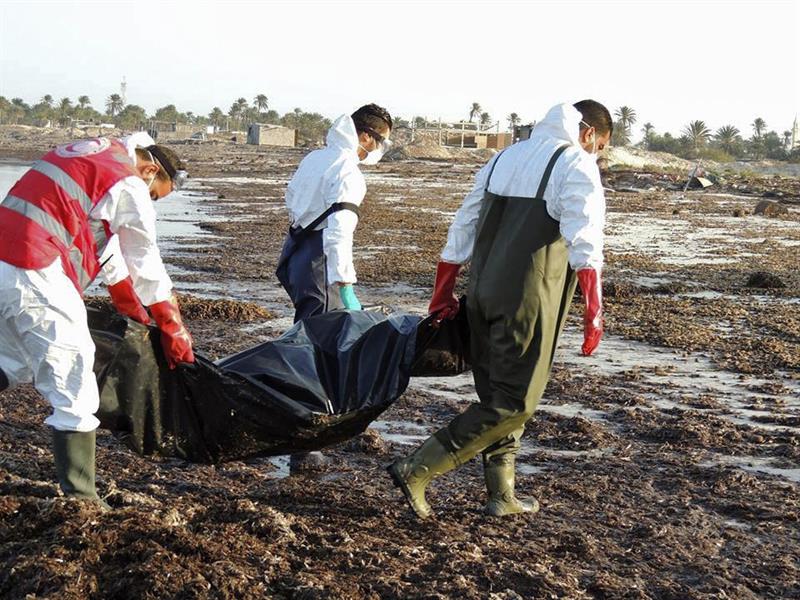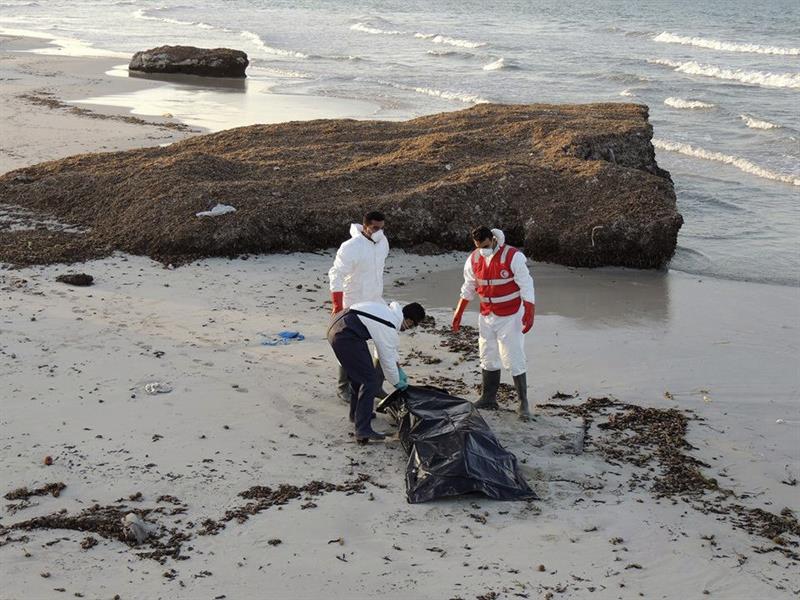The United Nation’s migration agency said Thursday that about 240 migrants trying to reach Europe on two rubber dinghies have drowned off the coast of Libya within the last 48 hours. This has been the deadliest year on record in the Mediterranean Sea with 4,220 deaths compared with last year’s 3,777, according to the International Organization for Migration.
IOM’s chief spokesman Leonard Doyle noted that people-smugglers are sending more migrants on unsafe rubber dinghies after European navies destroyed most of the fishing boats they had been using, as reported by Reuters. However, migrants are still determined to leave despite the dangers of the long sea crossing in terrible weather. Doyle informed that the Italian coastguard have coordinated five rescue ships which failed to pull most of the migrants to safety.

Those who managed to survive told IOM officials that smugglers have been telling migrants that Libya would soon assume the responsibility for rescues and that any rescued migrants would be taken ashore in Libya rather than in Italy. That might be forcing more people to risk their lives despite the bad weather and the precarious rubber dinghies.
U.N. refugee agency spokesman William Spindler pointed out last month that as demand has alarmingly increased across the North African route, smugglers willing to make money from desperate migrants fill the available ships far beyond capacity, which complicates rescue efforts, even more, The Washington Post reported.
Survivors inform
IOM’s Italy spokesman Flavio Di Giacomo said Thursday that survivors from one rubber dinghy included 20 women and six children who are believed to be from West Africa, as reported by Reuters. Their weak boat sank Wednesday a few hours after it set off from Libya at 3 a.m. (0500 GMT).
Giacomo told reporters that about 30 passengers survived in the cold waters and twelve dead bodies were recovered, including a 2-month-old baby. The survivors told the U.N. that more than 140 migrants were aboard.

Carlotta Sami, a U.N. refugee agency spokeswoman, said 29 survivors of this first wreck said their dinghy collapsed after wooden planks at the bottom of the boat broke apart, according to The Post. Pregnant women were on board.
In a separate rescue mission, two survivors of the other shipwreck said at least 120 people had been on board that vessel, which had serious issues right after it set out, Sami said. The boat broke apart off the Libyan coast around 5 a.m. Wednesday.
No further operations are taking place where those shipwrecks occurred, but the European Union is carrying out a search-and-rescue operation in the western Mediterranean with assistance from NATO military alliance, The Washington Post reported.
Sami mentioned that authorities were checking the origins of the survivors, but most of them apparently came from sub-Saharan Africa.
Separately, Italy’s coastguard rescuers found Thursday the body of one woman and managed to rescue about 766 migrants from boats in the central Mediterranean.
Filippo Grandi, the U.N. High Commissioner for Refugees, expressed he was “deeply saddened by another tragedy” and that many migrants could be rescued if European countries volunteered to welcome more refugees instead of leaving them to risk their lives in the deadly boat trip, as Reuters reported.
Migrant traffic across dangerous waters
More than one million migrants made the Mediterranean route in 2015 with most of them coming via Turkey to Greece and pressing onward into Europe.
After the Turkish government closed off the main pathway for migrants willing to flee the conflicts of Iraq and Syria into the continent, the safer and shorter sea portion was no longer an option and people have opted to risk their lives in the dangerous passage from Libya to Italy.
This has triggered traffic from Libya and northern Africa. More than 150,000 people arrived in Italy last year via the central Mediterranean route. The arrivals in that country in October 2016 have triplicated those of 2015.
“The Mediterranean is a deadly stretch of sea for refugees and migrants, yet they still see no other option but to risk their lives to cross it,” Grandi said in a statement, as quoted by Reuters.
Judith Sunderland, associate Europe, and Central Asia director at Human Rights Watch, said Wednesday that the “EU remains focused on deterrence over protection” in the deadliest year on record for boat migration to the continent, according to The Post.
“The EU should be pressing Libyan authorities for permission to operate in Libyan waters, so they can help those in distress and bring them safely to Europe,” Sunderland added.
Source: The Washington Post
